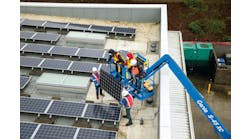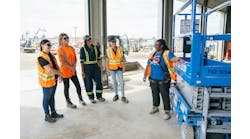The Association of Equipment Manufacturers announced the induction into the AEM Hall of Fame of Jim Gorman of the Gorman-Rupp Co., and Dr. Hans Liebherr of Liebherr Co. The AEM Hall of Fame honors pioneering individuals who have invented, managed, built and led the off-road equipment industry.
Candidates are judged by an independent panel of industry experts and supporters on how well they exemplify five guiding principles: innovation, industry contributions, leadership, corporate citizenship/social responsibility and sustainability.
Gorman’s father co-founded the company, and he was on the road at age 15 promoting Gorman-Rupp products. AEM said even today, as chairman of the board, Gorman is one of the first at work each morning. Gorman’s mantra is, "If we don’t take care of the customer, someone else will." His foresight to invest early in CAD/CAM design software helped his company lead the industry in construction pumps and water pollution control equipment.
His innovations include creating the first commercially available self-priming solids-handling trash pump. Gorman-Rupp became the first American manufacturer to offer a wide line of submersible pumps to meet the demanding conditions of mining environments.
Gorman initiated a number of socially responsible activities for the company. One example: the Adopt-A-School Program, through which employees spend time with students reading in the classroom, help with school maintenance and donate funds for necessary expenses.
Liebherr's impulse to innovate was exhibited early and often, and through his guidance, the company became identified as an engineering-driven one. In 1949 he developed and patented the TK 10 tower crane, the key product that became the platform for his new business. From this point, he continued to innovate and expand — with cranes as well as a wide variety of other construction equipment and industrial products.
Liebherr's focus on fuel efficiency and productivity led to the development of hydrostatic drive systems, and Liebherr products led the industry in implementing electronic controls for hydraulics. He was an early pioneer of high-pressure hydraulics, which still set the highest industry standard in excavators.
Liebherr fostered a corporate culture in which innovation and an entrepreneurial spirit propel company progress, and he was an early proponent of world trade. Starting in the late 1950s, he built Liebherr facilities outside of Germany. Many Liebherr factories were located in rural areas or less-developed industrial markets, which provided badly needed employment opportunities for local residents.





